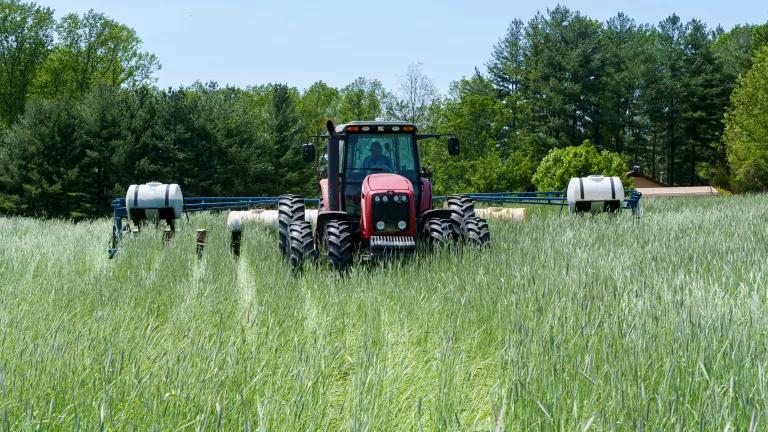Reducing Food Waste in the Nat'l Strategy on Hunger & Health
The White House Conference on Hunger, Nutrition, and Health shined a spotlight on the opportunities to advance health and local prosperity through the food system. At the conference, the Biden Administration released a National Strategy on Hunger, Nutrition, And Health, which was informed by previous public comment and listening sessions.

The White House Conference on Hunger, Nutrition, and Health, which was held on September 28, 2022, was long overdue. It came at a time that food prices are at an all-time high and it shined a spotlight on the opportunities to advance health and local prosperity through the food system. At the conference, the Biden Administration released a National Strategy on Hunger, Nutrition, And Health, which was informed by previous public comment and listening sessions. There are many other issues at play across these themes (including racial justice, environment, and many others), but this blog will focus on the Strategy as it relates to food waste.
Food waste sits at the intersection of all the topics in the Conference’s title. Ideally, by preventing food from becoming waste, redistributing surplus food, and recycling food scraps more nutritious foods will be available to people and it will create greater food security while reducing climate change emissions.
What is included in the National Strategy
Commitments by the federal government: There are five overarching pillars of the strategy:
- Improve food access and affordability;
- Integrate nutrition and health;
- Empower all consumers to make and have access to healthy choices;
- Support physical activity for all;
- Enhance nutrition and food security research.
Based on these pillars, the White House made commitments and calls to action that explicitly or tangentially have an influence on food waste. Here are some highlights:
- The Environmental Protection Agency (EPA), Department of Agriculture (USDA), and Food and Drug Administration (FDA) are leading the development of a whole-of-government strategy for reducing food loss and waste.
- The FDA will update its Food Code—which provides state, Tribal, local, and territory regulators with a model for updating their food retail and service industry regulations—to include food donation recommendations.
- The Department of the Treasury will clarify the enhanced charitable deduction calculation to support businesses donating food.
- The Administration will help advance a pathway to free healthy school meals for all.
- Across different pillars, there were several commitments to strengthening local and regional food systems by creating new programs, funding existing ones, and providing more assistance with grant applications.
- There were also several commitments and recommendations to leverage existing programs to fund food rescue, increase research on climate and food systems, and expand nutrition education.
Call for a whole-of-society approach: The Strategy rightly acknowledged that we need everyone to contribute if we are going to achieve systems change. The Strategy says, “State, local, and territory governments should enact food waste reduction and recovery policies.” These entities are critical to reducing food waste because waste is typically managed at the municipal level in the U.S. Through NRDC’s Food Matters project, we have tested and co-developed models to reduce food waste. NRDC’s Programs and Policies Toolkit is designed for local governments to use to jumpstart their own initiatives. Additional case studies, tools, and guides can support implementation.
Business, Academic, and Philanthropic Commitments: Alongside the release of the National Strategy, the White House also solicited and then publicized commitments from businesses, academia, nonprofits, and philanthropies to support nutrition and health. Many of the commitments centered around donating money or food. For example, Food Marketing Institute (FMI) will work with its membership to donate two billion meals in 2023 to food recovery organizations and will promote consumer education on healthy foods (reaching a minimum of 100 million consumers each year from 2023 to 2030). It is heartening to see further corporate engagement on food waste reduction and surplus food donation in the period since 2017, when our updated Wasted report documented corporate activities.
What is missing from the National Strategy
NRDC and partners submitted comments prior to the Conference on how food loss and waste could be addressed by the Conference. While it is encouraging to see some of our recommendations in the Strategy, other impactful ones were not included. Some of our other top recommendations include:
- Standardizing date labels: Confusion around what date labels mean leads to lots of good food being tossed, and currently there is a hodgepodge of laws that vary from state to state. NRDC advocates for a two label system, one that indicates freshness and one that indicates food safety. Standardizing date labels across the country, and including widespread education, would prevent food from being thrown out prematurely.
- Updating the Bill Emerson Good Samaritan Act: The Bill Emerson Act provides liability protection to many food donations. People have been calling for liability protection to be expanded to cover more types of food donations, such as direct donations to individuals.
- A focus on preventing food waste in the first place: Many of the commitments focus on donating food or money, but we didn’t see many, if any, that discussed how they were going to prevent excess food in the first place. Source reduction, or preventing excess, is the top of the food recovery hierarchy and the best way to address food waste.
What comes next?
In order to reduce food waste and create a healthier society, commitments and recommendations from the National Strategy need to be carried out and the programs and benefits must be distributed equitably. We can hold actors accountable, from the federal government to corporations, and advocate for more action around food loss and waste in conversations about hunger, nutrition, and health. We must leverage the momentum established by the White House Conference over the next year to pass legislation, such as the Farm Bill, and work through other channels, like federal agencies, to provide more funding, support, and shift the foundations of our currently wasteful and unhealthy system.




